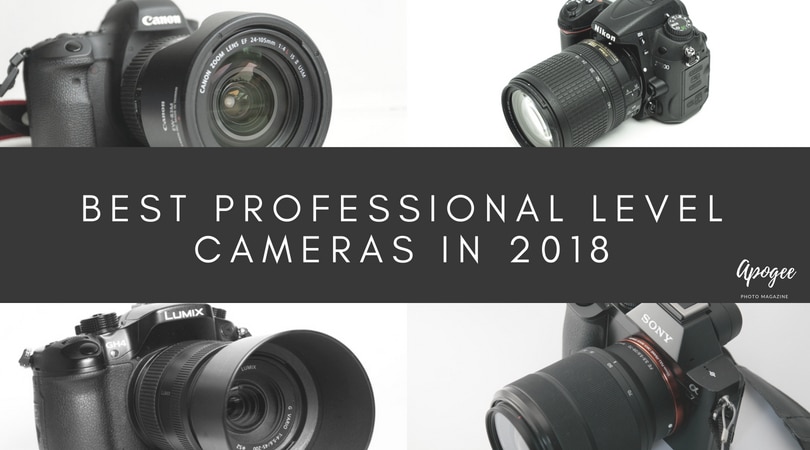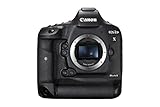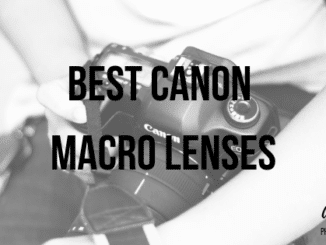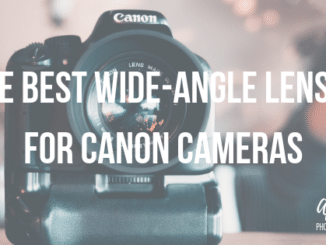 What constitutes a professional level camera, anyway? It should be capable of the highest level image quality, for starters. Noise control, depth of field, and video/image resolution should be as high as you need them to be for your workflow or art form.
What constitutes a professional level camera, anyway? It should be capable of the highest level image quality, for starters. Noise control, depth of field, and video/image resolution should be as high as you need them to be for your workflow or art form.
If you’re a videographer, you’ll want to consider what video resolution the camera is capable of recording and whether it’s enough for your workflow. While 4K on your new camera box always looks great not every display has the resolution to display it properly.
The price is almost certainly going to involve at least 4 digits, but that also depends on your needs. Professional grade cameras have fallen to around $2000 with the latest mirrorless cameras on the market. Most professional level DSLRs still tend to be significantly more than this, however.
What should I be looking for in a professional level camera?
Build Quality & Handling
This depends on my shooting conditions. If I’m going to be spending a lot of time in the outdoors, I should give priority to weatherization and a rugged body. Plastic bodies are light and cheap, but magnesium alloy construction is more durable in the long run.
What about the button layout? I often put menu functions on customizable buttons to save time (and having to pull out the user manual). Alternatively, I might prefer a body with more manual dials and button control to avoid having to navigate menus or crowd the body with buttons.
It’s also good to get a feel for the camera in-store. Major retailers will have many of the higher end models available to handle in-store. Even if a camera has most of the features you want if it’s not a joy to shoot with there’s a fair chance you’ll be reluctant to shoot with it.
Even a professional shooter should have a camera that’s intuitive and fun to operate if at all possible. Navigate the menus and see how intuitive the layout is. When holding the camera does the grip feel secure and natural? Do I like how the touchscreen operates? Is it too heavy – or not heavy enough? If I’m going to be operating it for hours at a time and investing thousands of dollars on just the camera body, I’d better enjoy using it.
Megapixel count
When shopping for cameras, there’s definitely a bias towards “the more megapixels, the better.” This is false and detrimental in many circumstances. One is best served by finding the camera with “just enough megapixels.”
So how many megapixels do I need? If I’m making large prints, then I should have at least 24 megapixels but preferably more to give me room to crop as needed. By using 24 megapixels, I can make prints as large as 20 x 13 in., and up to 300 ppi, considered standard for books and magazines. This is plenty for the vast majority of photographers. I can still crop by half and have enough resolution for an 8 x 10 in. print.
More megapixels are also what landscape and nature photographers should look for. The extra resolution preserves fine details in fur, feathers, distant foliage, and the grain in mountains and other natural scenery.
Sensor size
Sensor size remains as contentious an issue as ever. As you may have noticed, the list below contains cameras from both the Micro 4/3rds and Full Frame line of sensors.
The classic wisdom is that larger sensors provide more dynamic range, shallower depth of field, and better ISO and low light performance. While this is generally true, it’s also true that today’s cameras are far more on par with one another unless you intend to pixel peep at your images.
What’s more important is the size of the pixels themselves. Larger pixels are more efficient at gathering light and don’t generate as much noise from background electronic and light interference. Therefore, I need to balance my resolution needs with sensor size. I want the largest sensor I can afford combined with the lowest number of megapixels to give me good performance in challenging light conditions.
However, if I’m a studio photographer and always in control of my light sources then this goes right out the window: I can use as many megapixels as I wish to maximize sharpness and detail.
When it comes to the sensor, stabilization is also something to consider. More and more cameras are coming with sensor stabilization built in. This feature provides image stabilization for every image shot with the camera compared to simply relying on in-lens elements. Sensor stabilization is incredibly handy for minimizing motion blur caused by handheld shooting for both photography and video recording.
Battery Life
Stamina is a constant consideration while shooting. DSLR cameras tend to have more staying power than mirrorless ones because the optical viewfinder system is passive and doesn’t take power to run.
Mirrorless cameras use an electronic viewfinder system – and the bodies run smaller thanks to the lack of pentaprism mirrors. The batteries also run smaller to preserve the compact form, compounding the problem.
But the technology continues to improve. The Sony A7III’s 650 shots per charge CIPA rating is one of the highest on the market for mirrorless cameras. That’s strictly average compared to DSLR shooting – and falls far short of the Nikon D5’s 3780 shots per charge.
Every shooter needs extra batteries – but the number depends on the body, of course.
Video shooting
Video resolution is just as important as photo quality and just like megapixels I need to consider just how much is right for me. 4K is increasingly common and great to have.
And as a professional photographer, you’ll want to have at least the option available for when a client requests it. If you’re more of an enthusiast looking for a pro body 4K is much less of a priority unless you plan on watching video on a 4K display.
UHD 4K video (3840x2160p) has four times the resolution of Full HD (1920 x 1080p) and four times the file sizes as a result. I need to ensure I’m using SD cards rated fast enough to record all of that information.
Larger file sizes also mean editing and exporting my work takes that much longer to complete. I may also want DCI 4K (4096 x 2160) for that slight boost in the resolution that cinematic 4K provides.
Best Professional Level Cameras
Sony A7RIII
Full frame stabilized sensor.
Normally the very high resolution of the sensor (42.2 MP) in the Sony A7RIII would be something of a hindrance due to the much smaller pixel size. But BSI greatly improves the overall sensitivity and dynamic range of the A7RIII.
Built-in sensor stabilization also allows the A7RIII to be used handheld with less concern over motion blur. Sensor stabilization also allows for a few tricks.
The Pixel Shift mode of the A7RIII is based on the same technique that other high-end cameras like the Pentax K-1 Mark I/II, Olympus OM-D E-M1 Mark II and Panasonic LUMIX G9 use. Pixel Shift works by shifting the sensor slightly so that images are taken once for each color pixel. They’re then combined into a single composite image with incredible detail.
Since the sensor takes time to move for each image to be combined, the Pixel shift works only with stationary subjects and using a tripod. Moving objects will appear blurred because of the time taken between shots. Another minor drawback is that the camera doesn’t combine them itself; it’s done using the Remote app or in-computer using Sony software.
Advanced autofocus system
Sony’s autofocus systems are consistently rated as some of the best in the digital camera world, and the A7RIII continues this trend. With a combination of 399 on-chip phase detection points and 425 contrast detection points, the hybrid system ensures easy subject focus and tracking even in light conditions. Autofocus points can also be selected manually via the touchscreen.
Eye AF is incredibly useful for portrait photographers; the A7RIII can focus on a subject’s eyes even when downcast or partially obscured by hair or other obstacles. I can also program focus points within the frame to be accessed anytime using AF Area Register and the custom function buttons.
Superb videography tools
Firstly, the A7RIII down samples from 5K into 4K video using full pixel readout. Some cameras use pixel binning which is using adjacent pixels to form pixel units instead of the individual pixels recording information.
Sony also offers S-Log video recording which carries the maximum amount of tonal information from the sensor. This is incredibly useful for videographers looking for high-quality files to edit, regardless of file size. S-Log3 is especially useful thanks to the 14 stops of dynamic range it can provide.
- INCREDIBLE DETAIL: Shoot high speed subjects at up to 10fps with continuous, accurate AF/AE tracking
- OPTIMAL LIGHT: A back illuminated Exmor R CMOS sensor with gapless on chip lens collects more light. Operating Temperature: 32 to 104 degrees Fahrenheit / 0 to 40 degrees Celsius
- FASTER IMAGE PROCESSING: An updated BIONZ X processing engine boosts processing speeds up to 1.8x
- STUNNING HD VIDEO: Sony Alpha 7R 3 mirror less cameras record clear 4K video for editing and viewing.Bluetooth Standard Ver. 4.1 (2.4GHz band)
- BUNDLE INCLUDES: Power cord, charger, cable protector, shoulder strap, body/shoe caps, eyepiece cup. Metering Type:1200 zone evaluative metering
Pentax K-1 Mark II
Full frame stabilized sensor.
Like the Sony A7RIII, the K-1 Mark II also offers Pixel Shift mode. While it works the same way, the K-1 also offers a Dynamic Pixel Shift mode that actually uses subject motion to create the composite image. The results aren’t quite as high resolution as the tripod version but still creates beautifully rendered images.
The stabilized sensor also means that like the Sony A7RIII and Panasonic LUMIX G9, the K-1 Mark II offers increased stability while shooting images and video handheld by providing.
GPS Capability with Astrotracer
Astrotracer combines the flexibility offered by sensor stabilization and the innate GPS capabilities of the K-1 Mark II. The camera can physically move the sensor to keep the earth’s rotation from requiring you to make adjustments past 30 seconds of using Bulb mode. Astrotracer tracks for as long as 5 minutes with minimal star trails.
Even if you don’t decide to point your camera at the sky, the Pentax K-1 Mark II is the only camera here besides the Canon that comes with built-in GPS capability. This allows you to geotag images and video with GPS metadata. I can then look up the elevation, location coordinates, and UTC the image was taken. Many websites like Flickr can use this metadata for maps displaying the location of the image or video.
- 36 MP AA filter less shake reduction sensor with APS C crop mode for compatibility with Pentax k mount lenses
- Hand Held Pixel Shift Resolution that allows 4 images to be complied into an superior image with increased color rendition and sharpness
- Engine Accelerometer for reduced image noise, faster focusing and increased image sharpness
- Magnesium Alloy, Weather Resistant body for every demanding situation
- Astro tracer extended exposure mode with reduced star trails
Canon EOS-1D X Mark II
Dual Pixel Autofocus System
The 1D X Mark II is the first Canon full frame camera to use the Dual Pixel autofocus system. Dual Pixel AF works by splitting each pixel in half. One half works as an imaging pixel and the other works as a phase detection autofocus point. It is also very well suited to tracking subjects during video and/or using the Live View panel. Subjects remain sharp while moving and the background remains blurred with incredible bokeh.
Dual Pixel AF makes this the fastest Canon to date when it comes to phase detection autofocus speed. But with 61 autofocus (44 cross-type) points the EOS 1D X Mark II has less than half that of the Nikon D5, however. This gives us less flexibility in the composition of images and video.
Canon Videography features
Canon videographers take note: the EOS-1D X Mark II comes with 4K video, unlike the Mark I. And DCI 4K (4096 x 2160) at that, with a frame rate of up to 60 fps but not UHD 4K. That makes it the second Canon with 4K after the EOS 1D-C. Canon video lovers will find that the HDMI.
But the format used is Motion JPEG which results in extremely large file sizes compared to other formats such as H.264. On the other hand, Motion JPEG is perfectly suited for extracting stills from video post-shoot. Though if this is something you care to do regularly the Panasonic LUMIX G9’s 4K and 6K Photo Modes allow you to do so in-camera.
- Fastest shooting EOS-1D, capable of up to 14 fps full-resolution RAW or JPEG, and up to 16 fps in Live View mode with new Dual DIGIC 6+ Image Processors
- Achieves a maximum burst rate of up to 170 RAWs in continuous shooting at up to 16 fps, and 4K movies using CFast cards in the new CFast 2.0 slot
- Improved AF performance through 61-point, wide area AF system with 41 cross-type points, improved center point focusing sensitivity to -3 EV and compatibility down to f/8
- Accurate subject tracking for stills and video with new EOS Intelligent Tracking and Recognition AF with 360,000-pixel metering sensor
- 4K video (4096 x 2160) up to 60 fps (59.94), with an 8.8-Megapixel still frame grab in camera. Full 1080p HD capture up to 120 fps for slow motion
Nikon D5
Incredible Low-Light performance
With a maximum Hi-5 light sensitivity of ISO 3,280,000, the Nikon D5 takes low-light photography to a whole new level. Granted, at this high an ISO value the results are far too grainy to be professionally usable. Natively, the D5 has an unprocessed ISO of 102,400, which is still plenty for dark indoor settings. The large full-frame design combined with the relatively low resolution of 20.8 megapixels ensures the individual pixels can soak in available light.
The autofocus system is well suited to operate in extremely low light conditions, down to EV -4 illumination. With 153 autofocus points – 99 of which are cross-type – the D5 is extremely capable when it comes to locking on and tracking moving subjects even when the light gets challenging. Cross-type AF points are incredibly handy to have because they can lock onto both horizontal and vertical light patterns instead of being keyed to a single type.
Great Battery Life
The large body of this camera may seem like a negative to many; at 1415 g (3.12 lbs. / 49.91 oz.) only the Canon EOS-1D X Mark II is heavier (1530 g (3.37 lbs. / 53.97 oz.). But the rugged magnesium alloy construction and tank-like build ensures that even drops or rain won’t ruin your day as a photographer (not that you should test this overmuch given the price). This is very clearly a professional’s tool, and if you value superb image quality and full photographic control over lightness, the D5 will not disappoint.
Larger bodies also have room for larger batteries. The stamina on the D5 is incredible and one of its prime advantages over the other cameras here. The LUMIX G9 taps out early with only 400 shots per charge while the Canon is in second place with 1210 shots. With a CIPA rating of 3780 shots per charge, the D5 will keep going long after the others have quit.
- 20.8MP FX-Format CMOS Sensor
- EXPEED 5 Image Processor
- 3.2" 2.36m-Dot Touchscreen LCD Monitor
- 4K UHD Video Recording at 30 fps. CompactFlash (CF) (Type I, compliant with UDMA) XQD Type Memory
- Multi-CAM 20K 153-Point AF System
Panasonic LUMIX G9
Micro 4/3rds system
One of the main disadvantages of mirrorless cameras is that because they’ve been around for a much shorter time compared to DSLRs the lens selections tend to be much more limited in scope. But the Micro 4/3rds mounts all share compatibility, which can be a big benefit for a professional photographer looking at the Panasonic LUMIX G9.
Panasonic and Olympus both make Micro 4/3rds cameras; if you happen to prefer the Olympus M.Zuiko f/2.8 12-40mm over the Panasonic f/2.8 12-35mm then rest assured the lens will operate almost as well as it would with a native body. Almost. Some features like Depth from Defocus and sensor stabilization stacking with in-lens optical stabilization may not work as well with cross-branded lenses.
Depth from Defocus is a welcome improvement for a camera relying solely on contrast detection based autofocus. Phase detection has the speed advantage while contrast detection tends to be more reliable but noticeably slower.
DFD works by using preloaded image data combined with calibration for the particular lens paired with the camera. Autofocus speeds are greatly improved as a result without all of the extra panning contrast detection systems usually require.
One notable drawback of the Micro 4/3rds system is the size of the sensor. Low light performance can be significantly impacted, especially considering that the resolution of the G9 is the same as the Nikon D5 or Canon EOS 1D-X with that smaller sensor. The tiny pixels of the G9 will show noise grain much faster in challenging lighting situations as a result. Contrast detection-based autofocus systems also struggle in these light environments.
4K/6K Photo Modes plus Focus Stacking
Essentially the LUMIX G9 can take 4K video at 30 or 60 frames per second and then extract 8-megapixel images from the resulting video. 6K Photo allows for 18-megapixel images extracted from 6K video at 30 fps.
These video-photography hybrid modes are perfect for those times when you know a magic moment is coming but can’t quite predict when. And rather than having to sort through a burst mode series of images you can select the exact frame(s) you want and discard the resulting video. One major downside is that you’re limited to JPEG format; RAW is not an option for now.
The LUMIX G9 also offers in-camera focus stacking, a tremendous boon for macro photography lovers. Focus stacking works by taking a series of images of a still subject with the depth of field slightly adjusted. Normally, you’d then merge the images in a program like Adobe Photoshop or Helicon Focus. But the G9 can merge them in-camera. Users who prefer the computer software versions also have access to focus bracketing.
- Professional photo and video performance 20.3-Megapixel (Plus 80-megapixel high-resolution Jpeg/raw in-camera image) micro Four Thirds sensor with no low pass filter to confidently capture sharp images with a high Dynamic Range and artifact-free performance
- Rugged splash/freeze proof design Durable magnesium alloy body withstands heavy use out in the field and is freeze proof down to -10-degrees splash/dustproof construction with weather sealing on every joint dial and button
- Class-leading dual image stabilization 5-axis Dual image stabilization corrects all lenses including classic lenses not equipped with O I S to eliminate Blur and nearly eliminate body and lens shake in both photo and 4K video recording
- 4K 60P video 4:2:2 10bit & slow-motion effects silky-smooth 4K 60P recording (QFHD 4K 3840 x 2160/MP4) in 4 2 2 10bit high-speed video recording yields a dramatic slow-motion effect in 4K (60 fps max 2x slower [30P playback]) or full HD (180 fps max 6x slower [30P playback]) quality
- Connectivity and ports listen to headphones with a 3 5mm audio port connect to devices with USB 3.0 and connect to an external monitor or external Recorder with a full-size HDMI port available Twin SD card slots (UHS-II U3 compatible)
Conclusion
All of the cameras here are well suited to professional use. It’s impossible to go into full detail regarding the immense number of features all five of these digital powerhouses have to offer. But by highlighting some of the most exciting ones hopefully, you’ll be able to choose the right tool for your workflow.
Mirrorless cameras are perfect for photographers who don’t mind sacrificing battery life for a more compact body. The Sony A7RIII is the high-resolution mirrorless camera of choice. It combines an incredible diversity of features with a full frame backside illuminated, stabilized sensor.
The Panasonic LUMIX G9 is the most reasonably priced camera here. The Micro 4/3rds system is well loved by amateurs and professionals alike. But the 2.0x cropped field of view may take some getting used to if you’re accustomed to shooting with APS-C or full frame bodies. Like the Soy A7RIII, the LUMIX G9 is a full hybrid photography/videography camera.
DSLR lovers have the Pentax K-1 Mark II, Canon EOS 1D-X Mark II, and Nikon D5 to choose from. The Pentax is solidly an outdoor astrophoto and landscape photographer’s camera but performs admirably in almost any setting. Price-wise it’s far cheaper than either of the Canon or Nikon bodies. But the lens selection is a good deal smaller.
Nikon and Canon go head to head, as always. The D5 may hold a slight edge in photography thanks to the increased number of autofocus points and the low light performance of its sensor. The EOS 1D-X Mark II has some notable video capacity that makes it a must-have for the dedicated Canon lens collector. But other DCI 4k vs. UHD 4K the Nikon D5 matches or beats it in nearly all specs and for less money.














Leave a Reply